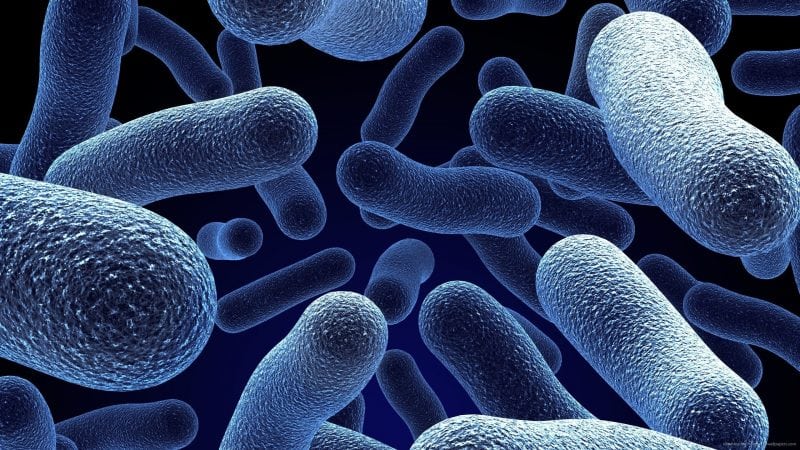
Pathogenic microorganisms affecting plants’ health are a major and persistent threat to food production throughout the world. Approximately 25% of the world’s crop yields are lost each year due to plant pathogens.
The needing to achieve higher crop yields to feed an expanding world population has led to an excessive use of agrochemicals. Nowadays, the use of synthetic pesticides constitutes the main strategy for pest management.
Our research focuses on the development of formulations based on biological pesticides for controlling plant diseases. Our goal is the development of Bacillus amyloliquefaciens, environmentally-safe bio-formulations highly effective in controlling plant diseases.
Bacteria of the genus Bacillus, particularly those from the Bacillus subtilis group, produce more than 2000 antimicrobial compounds. Members of this group possess the category GRAS (Generally Recognized as Safe) and their use is recommended by the United States Food and Drug Administration and by the United States Environmental Protection Agency.
Our lab has established a well-characterized collection of autochthonous bacterial strains isolated from soils of Córdoba, Argentina. One of these strains, identified as Bacillus amyloliquefaciens, is effective in inhibiting the growth of the phytopathogenic bacterium Xanthomonas axonopodis pv. vesicatoria. The main metabolite produced by Bacillus amyloliquefaciens responsible for the antibacterial activity against X. axonopodis pv. vesicatoria was identified as a mixture of fengycins A and B.
Fengycins are compounds belonging to the cyclic lipopeptide family which also includes surfactins and iturins. These compounds, mainly produced by Bacillus, are of particular interest for human, animal and plant health since they are quite stable at temperatures where common antibiotics are inactivated. Additionally, they are resistant to proteolytic activity. Although the mechanism by which fengycins kill bacteria is poorly understood, it is thought that act by generating pores in the cytoplasmic membrane of bacteria which lead to cell death.
We investigated a way to increase the production of these molecules in Bacillus amyloliquefaciens by modifying nutritional conditions, such as carbon and nitrogen sources, as well as carbon-to-nitrogen ratios. The production of surfactin was increased by 100 % in B. amyloliquefaciens. Additionally, the production of two new isoforms of fengicins (A and B) was detected in the optimized bio-formulation. These fengicins A and B were the responsible for the antibacterial activity. We also evidenced that these cyclic lipopeptides, containing surfactin and fengicins (A and B), from Bacillus amyloliquefaciens are able to disrupt biofilms formed on the tomatoes leaves by the bacterial pathogen Xanthomonas axonopodis pv. vesicatoria, the causal agent of the disease called bacterial spot of tomato.
Fengicins act different to conventional antibiotics — therefore, the appearance of resistant strains is more unlikely. Additionally, their mechanism of synthesis is non-ribosomal. Fengycins, also disintegrate biofilms or disturb they formation which is a highly favorable trait for controlling bacterial diseases. The chemical structure of fengicins (ie, the orientation of the hydrophilic and hydrophobic groups, the presence of amino acid residues and the length of the fatty acid chain) strongly influence their biological and surface activities. As all cyclic lipopeptides, fengicins are synthesized as a mixture of variants, distinguished as isoforms (which differ slightly in the amino acid sequence) and homologs (which differ in the length of the fatty acid). These characteristics, together with its low toxicity, high biodegradability, and stability in extreme conditions of temperature, pH, and salinity, make cyclic lipopeptides relevant molecules in biotechnology.
The above-mentioned attributes make fengicins promising candidates as an alternative therapy to control bacterial diseases in plants and even in animals and humans. Thus, non-conventionally antimicrobials produced by Bacillus have a huge potential in the era of multi-drug resistance.
These findings are described in the article entitled Improvement of biomass and cyclic lipopeptides production in Bacillus amyloliquefaciens MEP218 by modifying carbon and nitrogen sources and ratios of the culture media, recently published in the journal Biological Control. This work was conducted by Daniela B. Medeot, Magdalena Bertorello-Cuenca, Juan Pablo Liaudat, María Flores-Cárceres, and Edgardo Jofré from the National University of Río Cuarto, and Florencia Alvarez from the Universidad Nacional de La Plata.









